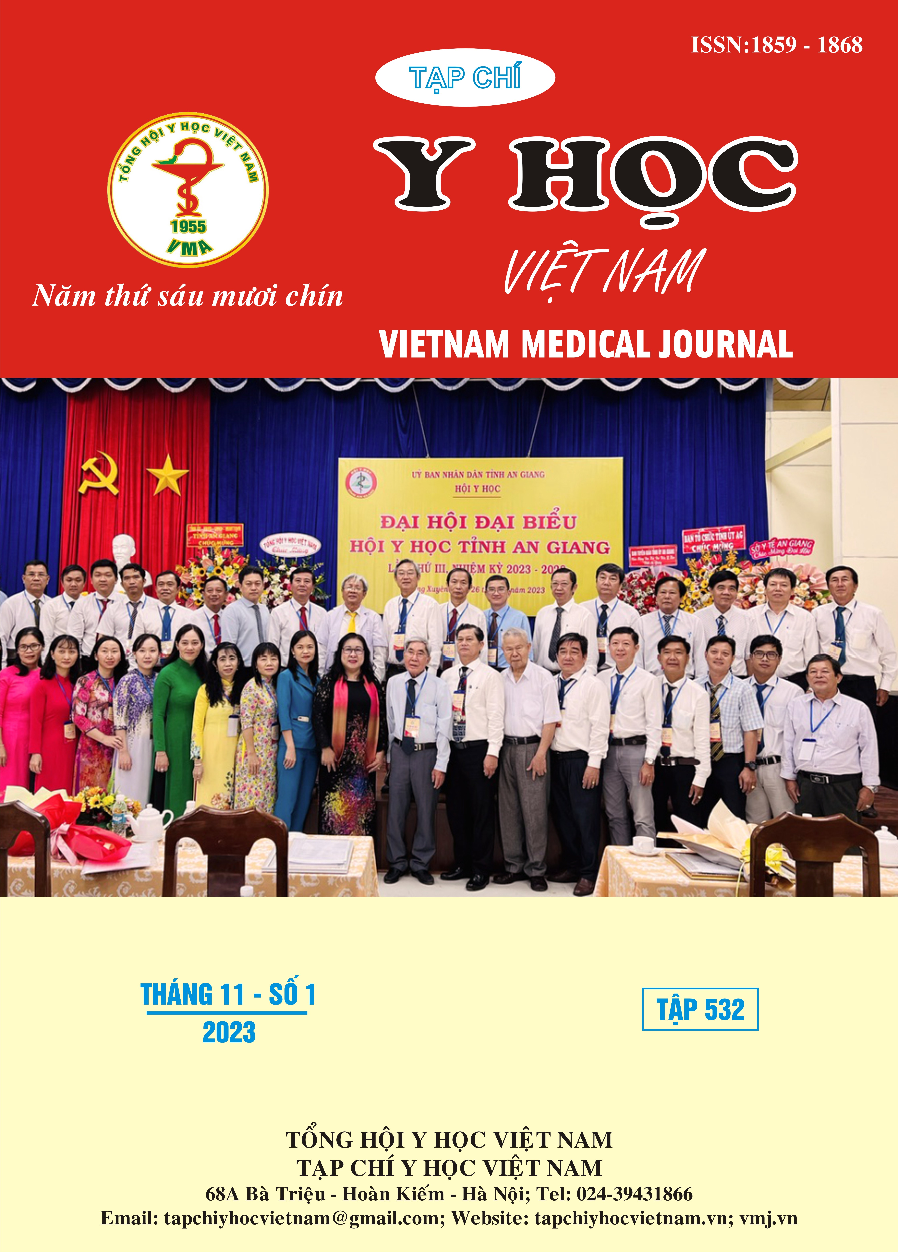TO INVESTIGATE CHARACTERISTICS OF PATIENT USING NON-INVASIVE PRE-IMPLANTATION GENETIC TEST
Main Article Content
Abstract
Objectives: To investigate characteristics of patient using non-invasive pre-implantation genetic test. Subject and methods: This descriptive cross-sectional study was conducted on 14 volunteer couples with indication for PGT-A và NiPGT-A from March 2020 to November 2020 at the Military of Institute Clinical Embryology and Histology, embryos were cultured by using single-drop culture process. Results: The mean age of 14 patients was 35.71 ± 3.17, Infertility 2 accounts for 85.71%, The main indications of PGT-A, NiPGT-A are consecutive implantation failure (85.71%) and advanced maternal age (57.14%), the mean level of AMH was 2.32ng/mL, the mean number of Antral follicles count was 12.07 ± 4.12, Total FSH dose used in controlled ovarian stimulation cycle was 2578.57 ± 483.66 IU, the mean duration of FSH administration was 10.14 ± 1.1 days, the average number of aspirated oocyte corona complexes was 8.5 ± 4.55 complexes. The mean number of oocytes after denudation was 8.07 ± 3.87. MII oocyte was 7.14 ± 3.63. The mean 2PN zygote was 5.21 ± 2.94. The mean MII oocyte rate was 89.84 ± 14.73%. The fertilization rate was 73 ± 18%, the percentage of day-3 cleavage embryo was 98.41 ± 4.03%, the blastulation rate was 58.08 ± 27.8%. Conclusions: The main indications for PGT-A, NiPGT-A are consecutive implantation failures (85.71%) and advanced maternal age (57.14%), the percentage of day-3 cleavage embryo was 98.41 ± 4.03%, the blastulation rate was 58.08 ± 27.8%.
Article Details
Keywords
single-drop embryo culture, individual embryo culture, in vitro fertilization, niPGT, noninvasive pre-implantation genetic testing.
References
2. Friedenthal J., Maxwell S.M., Munné S. et al. (2018). Next generation sequencing for preimplantation genetic screening improves pregnancy outcomes compared with array comparative genomic hybridization in single thawed euploid embryo transfer cycles. Fertility and Sterility, 109(4), 627–632.
3. Bellver J., Bosch E., Espinós J.J. et al. (2019). Second-generation preimplantation genetic testing for aneuploidy in assisted reproduction: a SWOT analysis. Reproductive BioMedicine Online, 39(6), 905–915.
4. Barad D.H., Darmon S.K., Kushnir V.A. et al. (2017). Impact of preimplantation genetic screening on donor oocyte-recipient cycles in the United States. American Journal of Obstetrics & Gynecology, 217(5), 576.e1-576.e8.
5. Munné S., Kaplan B., Frattarelli J.L. et al. (2019). Preimplantation genetic testing for aneuploidy versus morphology as selection criteria for single frozen-thawed embryo transfer in good-prognosis patients: a multicenter randomized clinical trial. Fertil Steril, 112(6), 1071-1079.e7.
6. Northrop L.E., Treff N.R., Levy B. et al. (2010). SNP microarray-based 24 chromosome aneuploidy screening demonstrates that cleavage-stage FISH poorly predicts aneuploidy in embryos that develop to morphologically normal blastocysts. Mol Hum Reprod, 16(8), 590–600.
7. Magli M.C., Albanese C., Crippa A. et al. (2019). Deoxyribonucleic acid detection in blastocoelic fluid: a new predictor of embryo ploidy and viable pregnancy. Fertility and Sterility, 111(1), 77–85.
8. Vera-Rodriguez M., Diez-Juan A., Jimenez-Almazan J. et al. (2018). Origin and composition of cell-free DNA in spent medium from human embryo culture during preimplantation development. Hum Reprod, 33(4), 745–756.
9. Feichtinger M., Vaccari E., Carli L. et al. (2017). Non-invasive preimplantation genetic screening using array comparative genomic hybridization on spent culture media: a proof-of-concept pilot study. Reproductive BioMedicine Online, 34(6), 583–589.
10. Fang R., Yang W., Zhao X. et al. (2019). Chromosome screening using culture medium of embryos fertilised in vitro: a pilot clinical study. J Transl Med, 17(1), 73.


